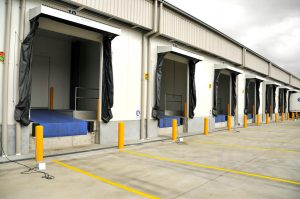The Importance of Environmental Considerations in Seal Technology: Exploring Tretight Seals
Introduction
In today’s rapidly changing world, environmental consciousness is at the forefront of technological advancements across various industries. As concerns about climate change and sustainability continue to grow, companies are increasingly seeking innovative solutions that minimize their ecological footprint. In this context, the adoption of environmentally friendly seal technology, such as Tretight Seals, has become paramount in ensuring both operational efficiency and environmental stewardship.
The Environmental Impact of Traditional Seal Technology
Traditional seal technologies, while effective in their function, often come with significant environmental drawbacks. For instance, many conventional seals rely on materials derived from non-renewable resources, such as petroleum-based rubbers and plastics. The extraction and processing of these materials contribute to carbon emissions and environmental degradation, exacerbating the challenges posed by climate change.
Furthermore, the manufacturing processes associated with traditional seals often entail high energy consumption and waste generation. From raw material extraction to product assembly, each stage of production can have a substantial environmental footprint, including air and water pollution, habitat destruction, and greenhouse gas emissions.

Tretight Seals: A Sustainable Alternative
In contrast to conventional seal technologies, Tretight Seals offer a sustainable alternative that prioritizes environmental responsibility without compromising performance. These seals are engineered using eco-friendly materials sourced from renewable sources, such as natural rubber and bio-based polymers. By minimizing reliance on fossil fuels and embracing renewable resources, Tretight Seals help reduce the carbon footprint associated with seal manufacturing and usage.
Moreover, Tretight Seals are designed with durability and longevity in mind, extending the lifespan of equipment and reducing the need for frequent replacements. This not only enhances operational efficiency but also minimizes waste generation and resource consumption over time. Additionally, the innovative design of Tretight Seals ensures a tight and reliable seal, preventing leaks and minimizing energy loss in various applications, from industrial machinery to automotive systems.
Reducing Environmental Impact Across Industries
The adoption of Tretight Seals has the potential to yield significant environmental benefits across a wide range of industries. In the automotive sector, for example, the use of these eco-friendly seals can contribute to improved fuel efficiency by minimizing air leakage in engines and transmissions. This, in turn, leads to reduced greenhouse gas emissions and lower overall environmental impact throughout the vehicle’s lifecycle.
Similarly, in industrial settings, Tretight Seals play a crucial role in enhancing the sustainability of manufacturing processes by minimizing fluid leaks and optimizing equipment performance. Whether in hydraulic systems, pneumatic machinery, or fluid handling applications, the use of Tretight Seals helps conserve resources, reduce downtime, and mitigate environmental risks associated with leaks and spills.
Conclusion: Embracing Sustainable Seal Technology
As the world continues to grapple with environmental challenges, the importance of sustainable technologies cannot be overstated. Tretight Seals exemplify a forward-thinking approach to seal technology, offering a viable solution that combines performance, reliability, and environmental responsibility. By embracing these eco-friendly seals, industries can not only enhance their operational efficiency but also contribute to a healthier planet for future generations. In this era of rapid technological advancement, prioritizing sustainability is not just a choice but a necessity, and Tretight Seals pave the way for a greener and more sustainable future.
In conclusion, the adoption of Tretight Seals represents a significant step towards mitigating the environmental impact of seal technology while meeting the evolving needs of modern industries. Through innovation, collaboration, and a commitment to sustainability, we can harness the power of technology to create a more resilient and environmentally conscious world.


Recent Comments